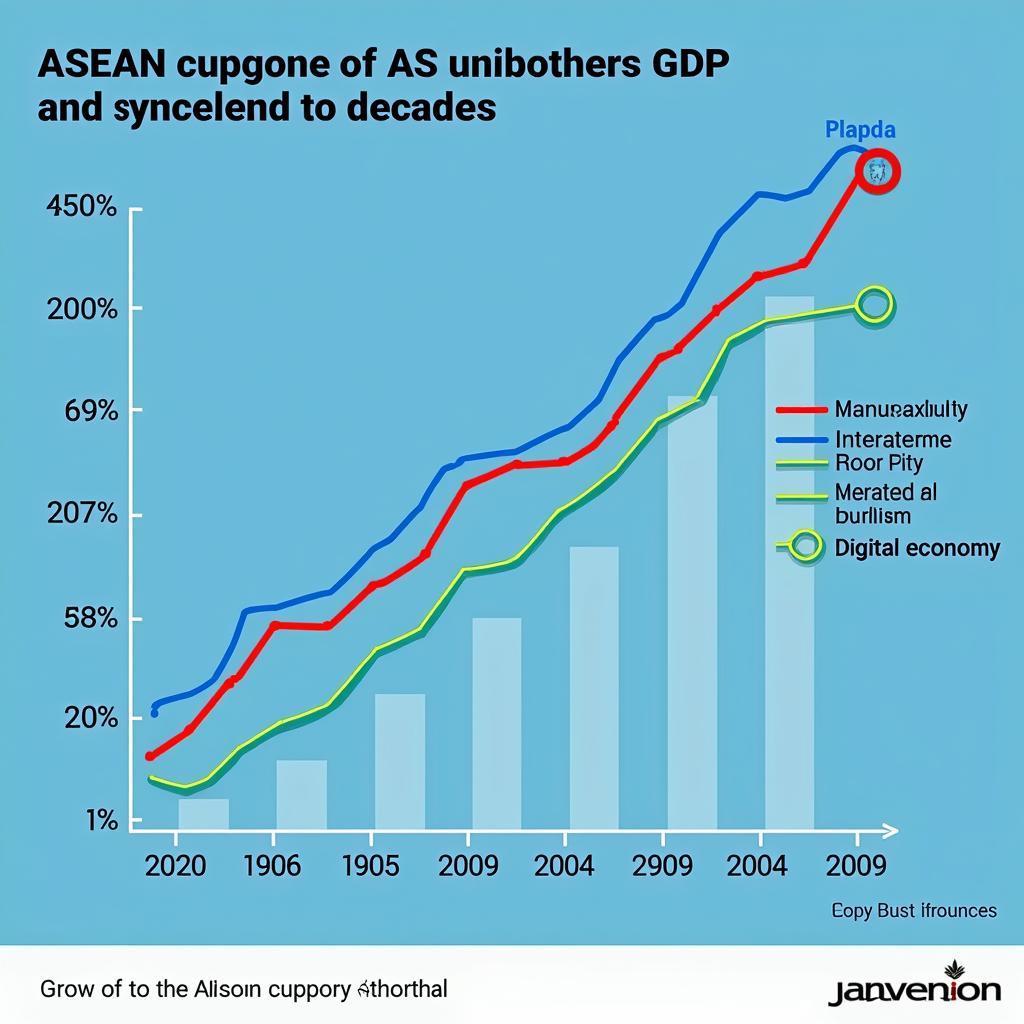The ASEAN economic bloc represents a dynamic force in the global economy, fueled by a rapidly growing consumer base, abundant natural resources, and strategic location at the heart of Asia. This article delves into the intricacies of the ASEAN economic community, exploring its evolution, key achievements, and future prospects as a unified economic powerhouse.
 Map showcasing ASEAN economic integration
Map showcasing ASEAN economic integration
From Vision to Reality: The Genesis of ASEAN Economic Integration
The Association of Southeast Asian Nations (ASEAN) embarked on its journey towards economic integration in 1992 with the establishment of the ASEAN Free Trade Area (AFTA). This landmark agreement aimed to enhance intra-ASEAN trade by gradually eliminating tariffs and non-tariff barriers.
The vision of a single market and production base gained further momentum with the adoption of the ASEAN Economic Community (AEC) Blueprint in 2007. This comprehensive roadmap outlined key measures to achieve free flow of goods, services, investment, and skilled labor across the region.
Pillars of Progress: The Four Pillars of the AEC
The AEC is built on four fundamental pillars, each designed to foster economic integration and enhance regional competitiveness:
- Single Market and Production Base: This pillar focuses on creating a more integrated market by harmonizing standards, facilitating cross-border trade, and promoting investment liberalization.
- Competitive Economic Region: Measures under this pillar aim to enhance the region’s competitiveness by promoting innovation, developing infrastructure, and fostering a business-friendly environment.
- Equitable Economic Development: This pillar emphasizes inclusive growth by addressing development gaps among member states, promoting small and medium enterprises (SMEs), and investing in human capital development.
- Integration into the Global Economy: This pillar underscores ASEAN’s commitment to multilateralism and seeks to strengthen the bloc’s position in global value chains through free trade agreements and economic partnerships.
 Chart illustrating ASEAN economic growth
Chart illustrating ASEAN economic growth
Milestones and Achievements: Transforming the Economic Landscape
The ASEAN economic bloc has made significant strides in advancing economic integration and regional cooperation. Key achievements include:
- Tariff Elimination: AFTA has been largely successful in eliminating tariffs on intra-ASEAN trade, boosting trade flows and fostering regional value chains.
- Trade Facilitation: Initiatives such as the ASEAN Single Window and the ASEAN Trade Repository have streamlined customs procedures and reduced trade transaction costs.
- Investment Liberalization: The ASEAN Comprehensive Investment Agreement (ACIA) has created a more open and transparent investment regime, attracting foreign direct investment.
- Connectivity Enhancement: Infrastructure development projects, particularly in the areas of transportation and energy, have improved connectivity and facilitated cross-border movement of goods and people.
The Way Forward: Navigating Challenges and Seizing Opportunities
While the ASEAN economic bloc has come a long way, it still faces challenges in realizing its full potential.
- Non-Tariff Barriers: Despite progress in tariff reduction, non-tariff barriers remain a significant impediment to trade. Addressing these barriers through harmonization of standards and regulations is crucial.
- Development Gaps: Income disparities among member states pose a challenge to equitable development. Bridging these gaps through targeted investments and capacity building is essential.
- Geopolitical Uncertainties: The global landscape is marked by rising protectionism and geopolitical tensions. ASEAN must navigate these uncertainties and maintain its commitment to open regionalism.
Conclusion: Towards a More Integrated and Prosperous ASEAN
The ASEAN economic bloc has emerged as a driving force in the global economy, demonstrating the power of regional integration in unlocking growth and prosperity. By addressing remaining challenges and capitalizing on emerging opportunities, ASEAN can solidify its position as a dynamic and influential economic powerhouse in the decades to come.
FAQ
What are the benefits of economic integration for ASEAN member states?
Economic integration fosters economic growth, creates job opportunities, enhances competitiveness, and improves living standards for citizens of ASEAN member states.
How does ASEAN’s economic integration benefit businesses operating in the region?
Businesses benefit from a larger market, reduced trade barriers, simplified customs procedures, and a more predictable and transparent investment environment.
What is ASEAN doing to promote sustainable and inclusive economic growth?
ASEAN is committed to promoting sustainable development by addressing climate change, promoting green technologies, and ensuring that economic growth benefits all segments of society.
Need More Information?
For further inquiries and assistance, please contact our dedicated support team:
Phone: 0369020373
Email: [email protected]
Address: Thôn Ngọc Liễn, Hiệp Hòa, Bắc Giang, Vietnam
Our customer service representatives are available 24/7 to assist you.
